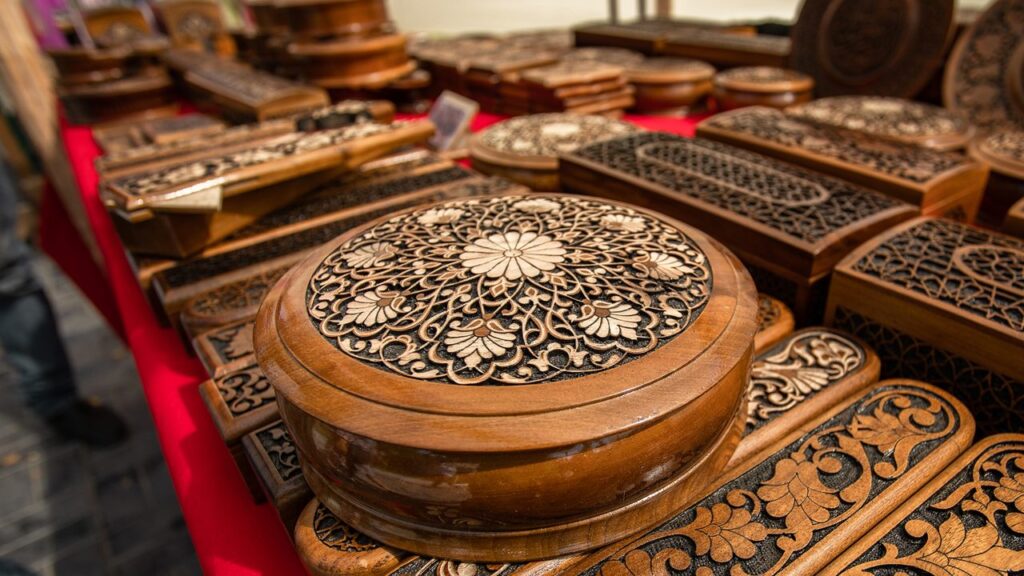
Menu

Kashmir’s walnut wood carving is one of the region’s most treasured art forms — a craft that transforms timber into timeless beauty. Made from the rich, dark wood of the walnut tree (Juglans regia), which grows abundantly in Kashmir’s cool climate, this artisanal practice has been nurtured over centuries, often passed down through family lines.
The magic begins when seasoned walnut wood is selected, known for its durability, fine grain, and ability to hold intricate detail. Skilled craftsmen, called Naqash and Khandkars, use hand tools like chisels and hammers to delicately carve motifs inspired by nature — chinar leaves, lotuses, vines, and Kashmiri paisleys. Each piece, whether a table, jewelry box, or panel, becomes a canvas for storytelling.
More than furniture, walnut wood carvings are cultural artifacts. In many Kashmiri homes, carved wood panels and ceilings reflect not just design preferences but also a deep-rooted aesthetic that values harmony with nature and ornate detail. Tourists and collectors alike prize these creations for their elegance and handmade authenticity.
However, this ancient craft faces modern challenges — deforestation, machine-made replicas, and a decline in artisan numbers. Despite this, a resurgence is on the horizon as connoisseurs rediscover the soulful craftsmanship and environmental sustainability of hand-carved art.
Kashmiri walnut wood carving is not just about décor; it’s about tradition shaped by human hands, echoing through every groove and grain.

@THE INDIAN ART COTTAGE
© The Indian Art Cottage | All Rights Reserved | 2025